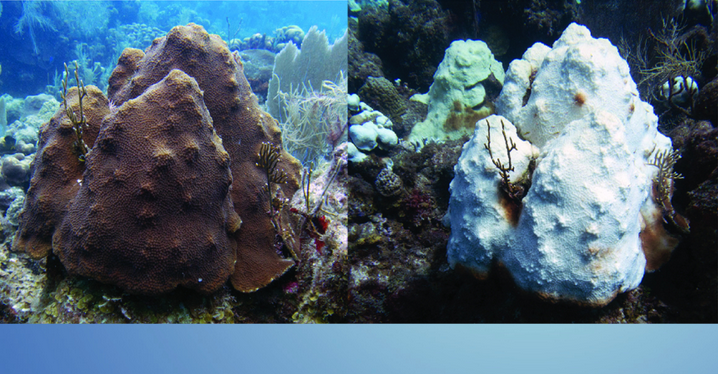While they might look like plants, corals are actually invertebrate animals related to jellyfish. They get their vibrant colors from tiny algae that live on them and provide them with food. But when ocean temperatures become too hot, corals get stressed and expel the algae, losing their food source and color. Starving coral can recover if their environments improve, but the International Panel on Climate Change (IPCC) predicts that even with the Paris Agreement’s allotted warming of 1.5°C over pre-industrial levels, 70–90% of the world’s coral reefs will still die.
Because coral reefs provide such vibrant ecosystems for sea life, mass coral death will impact economies and food security for humans as well. By protecting coasts, sustaining fisheries, generating tourism and creating jobs, it is estimated that coral reefs provide ecosystem services worth trillions of dollars each year (MIT Science Policy Review, 8/20/20; GCRMN, 10/5/21).
In the past year alone, we’ve seen staggering and unprecedented ocean temperatures amid widespread heatwaves. Last summer, water temperatures of more than 100°F were recorded off the coast of Florida (ABC, 7/25/23). Scientists say the El Niño weather phenomenon, solar activity and a massive underwater volcanic eruption have played a role in recent supercharged ocean temperatures, but the biggest cause of this coral crisis is undisputed: climate change. The IPCC reports that it’s “virtually certain” ocean temperatures have risen unabated since 1970, absorbing more than 90% of excess heat from the climate system. We also know that the burning of fossil fuels changes the climate more than any other human activity does.
Therefore, in order to give the public the most complete understanding of what’s going on—and how we can fix it—reporting on coral bleaching should not only link the phenomenon to climate change, but link climate change to its main culprit: the fossil fuel industry. While much reporting deserves credit for clearly making this connection, some reports from major outlets were still behind, implying the climate crisis might be some sort of act of God, rather than something humans have caused—and have the power to mitigate.
(Emphasis original.)



Finally, a post in which I have some academic expertise.
Corals have adapted over thousands of years to thrive in the temperatures in their areas of the globe. As such, they are able to survive the natural rise and fall in temperatures year-round. However, as climate change increases all temperatures worldwide, and makes heat waves more likely and more intense, it directly threatens all corals around the world.
Corals bleach if temperatures reach 1 °C above long-term monthly averages* for one month, and die if it is 2 °C above for a month or 1 °C above for two months. We passed the tipping point where corals start bleaching in the 1980s.
As CO2 levels have continued to rise (past 400 ppm as of today), and as global average temperatures have continued to increase, more and more coral reefs experience temperatures above their bleaching tipping point. As a result, today corals around the world bleach every single year. They bleach so often that they have no time to recover and simply die.
The IPCC and COP’s CO2 targets WILL guarantee that coral reefs go extinct. However, current governments’ policies are not even meeting that standard. In order to preserve coral reefs, we need to not only stop all CO2 emissions, but reverse our previous emissions to pre-industrial levels (280 ppm) and reduce global temperatures through technologies like rewilding, carbon dioxide removal, and solar radiation management.
Until then, we will have to use technologies like electrified reefs (Biorock) and genetic breeding of heat-resistant corals to hopefully preserve some modicum of coral reefs for post-climate change days.
Some people will bring up causes such as sedimentation and destruction due to human activity, and toxicity from waste and sunscreen. While these are factors, they are extremely localized and do not account for the majority of bleaching events worldwide. Pristine corals in the middle of the ocean that have never experienced human activity are also bleaching.
If anyone has any questions around this topic, feel free to ask!
* for scientific and data reasons, long-term monthly averages for any location on Earth are defined as the average temperatures of the hottest months at that location in the 1980s